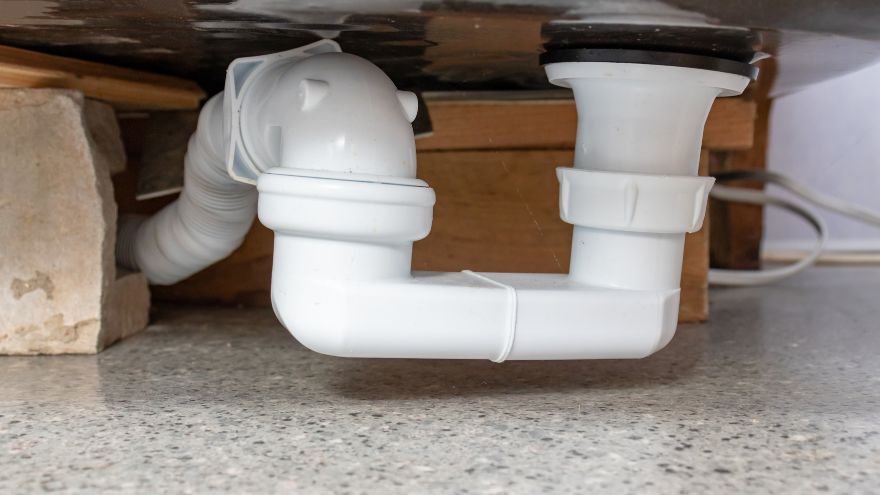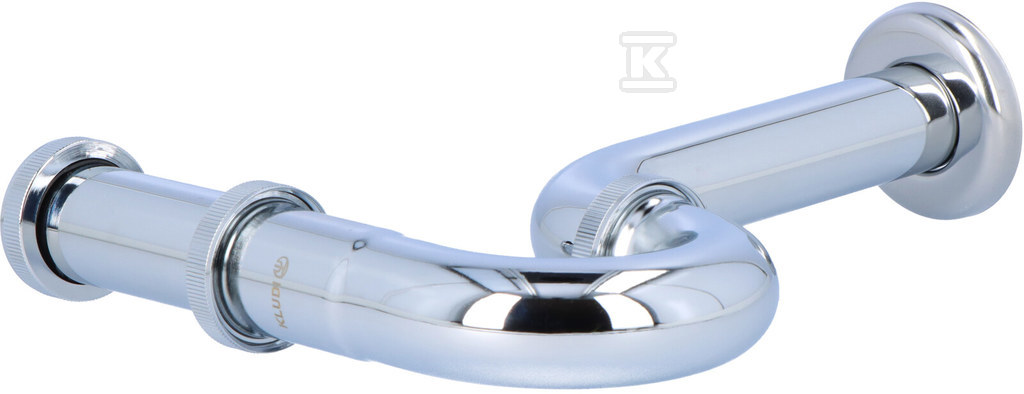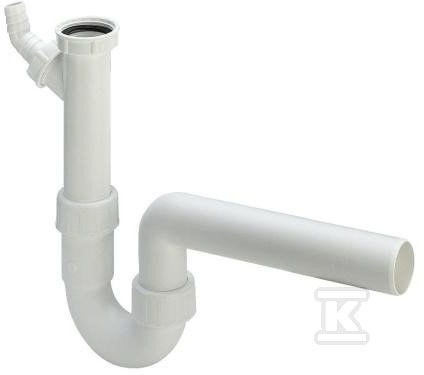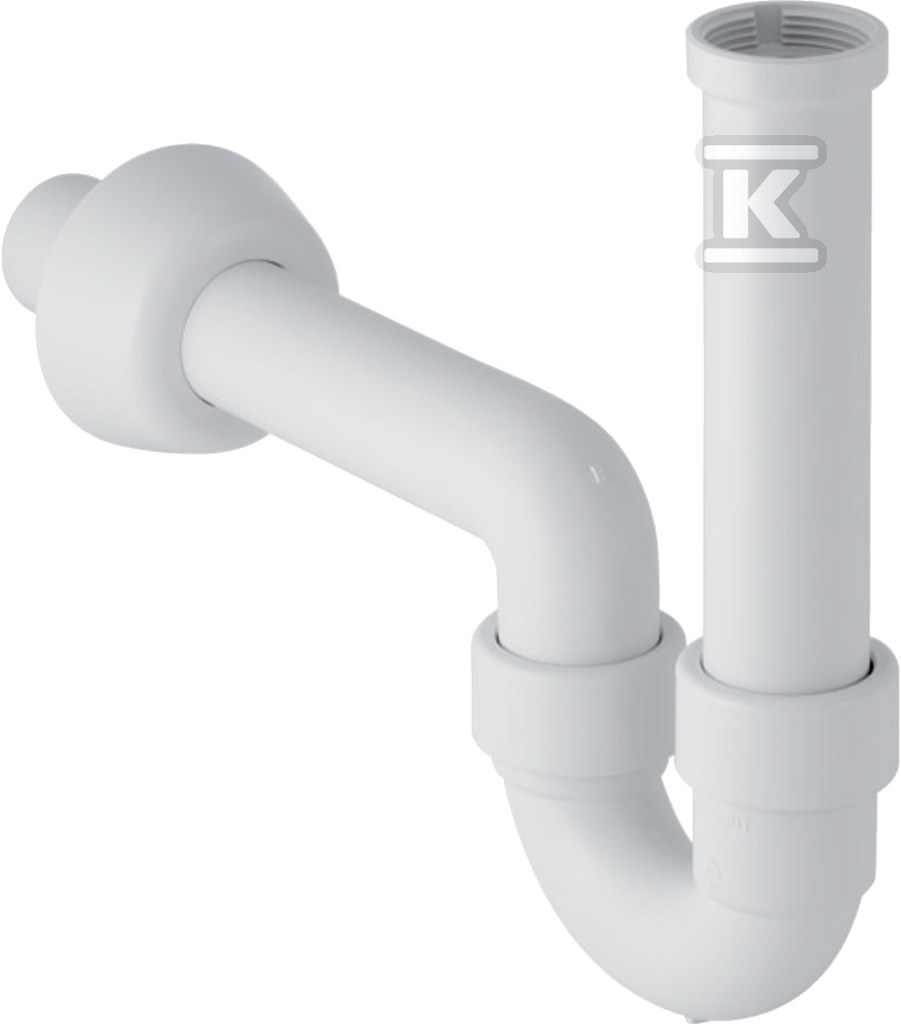How often a sink in the kitchen or bathroom gets clogged depends largely on the type of siphon chosen for it. This is an element of the installation that primarily stops unpleasant odours. However, sink siphons tend to get clogged. Especially in the case of a narrow drain. How to deal with this? Choosing the right siphon can prevent everything. A pipe siphon will work best.

Check out the pipe siphons at the Onninen wholesaler
Why is a pipe siphon better suited for use in the kitchen?
 Manufacturers of sanitary products offer various types of siphons. They can be divided according to the way they work. In this respect, classic, automatic and valve siphons for washbasins are distinguished. Some manufacturers also offer non-standard siphons. Another criterion for division may be the shape of the siphon. The following can be connected to the washbasin:
Manufacturers of sanitary products offer various types of siphons. They can be divided according to the way they work. In this respect, classic, automatic and valve siphons for washbasins are distinguished. Some manufacturers also offer non-standard siphons. Another criterion for division may be the shape of the siphon. The following can be connected to the washbasin:
- tubular washbasin siphon,
- bottle washbasin siphon.
Pipe siphons are distinguished by the fact that the shape of the drain pipe resembles the letter "U". This is the model that will work best in the cupboard under the sink in the kitchen. Pipe siphons have the advantage that they are very easy to clean, and they are much less likely to get clogged.
A bottle siphon, as its name suggests, is made of piping and a so-called bottle. This element performs a throughput function. Bottle siphons are usually easier to maintain. They should also not clog when cleaned regularly, but their disadvantage is that they take up much more space.
Correct step-by-step instructions for installing a pipe siphon
Installing a siphon is essential not only for sinks or washbasins, but also when installing a bathtub, bidet or shower tray. How to do it correctly in the case of tubular models? When installing this type of siphon to a sink or countertop washbasin, you first need to prepare the tools. We are talking about a French wrench, a measuring tape and a screwdriver.
 A sink siphon should have all the accessories necessary for a comprehensive connection to the sewage system. Therefore, no other additional elements are needed for installation. The sink siphon should be properly measured. To make it easier, it is worth installing a strainer, drains and seals, as well as a plug in the sink opening in advance. They should be properly fitted so that water does not drip under the sink. To do this properly, it is best to always follow the instructions included with the given siphon model.
A sink siphon should have all the accessories necessary for a comprehensive connection to the sewage system. Therefore, no other additional elements are needed for installation. The sink siphon should be properly measured. To make it easier, it is worth installing a strainer, drains and seals, as well as a plug in the sink opening in advance. They should be properly fitted so that water does not drip under the sink. To do this properly, it is best to always follow the instructions included with the given siphon model.
Then, all you need to do is fit the drain pipes. They are located between the strainer and the siphon and between it and the sewage drain. It is extremely important to maintain the slope ( it is assumed that this should be 2%), and also to ensure that the siphon itself is in such a position that the water never leaves the pipe completely . After tightening all the elements, it is best to immediately check whether the tank and other places are completely tight.
In which bathroom or kitchen is a washbasin semi-siphon suitable?
 Only those sets that, in addition to the elbow or bottle, also have connecting pipes, a strainer and a stopper should be called a siphon. If any of these elements are missing, the term semi-siphon should be used. It is worth noting, however, that these terms are often used interchangeably, so when buying them, it is good to make sure what exactly is included in a given set.
Only those sets that, in addition to the elbow or bottle, also have connecting pipes, a strainer and a stopper should be called a siphon. If any of these elements are missing, the term semi-siphon should be used. It is worth noting, however, that these terms are often used interchangeably, so when buying them, it is good to make sure what exactly is included in a given set.
When is it better to choose a half-siphon for a washbasin ? Because it does not have a strainer or a stopper, it is a solution that will work when the washbasin has these elements in the set. Those who want a specific model of stopper and prefer to buy it separately can also decide to buy a half-siphon so that the bathroom is more coherent. This choice may also be better in those bathrooms or kitchens where a click-clack stopper is to be installed to the washbasin or sink.
Pipe siphons at the Onninen wholesaler
The Onninen plumbing wholesaler offers a wide range of siphons, connectors and connecting pipes, including washbasin and bidet siphons from brands such as Viega, Alcadrain, Geberit, Roca and Kludi Armaturen. These include:
- Viega sink pipe siphon 6/4"x50 plastic / white 102838 - Equipped with a connection for a waste water hose. The outer diameter of the drain pipe is 50 mm.
- Geberit pipe siphon for washbasin and bidet, horizontal drain 151.100.11.1 – this is a Geberit brand siphon. It can be used not only under the washbasin, but also for the bidet. Made of polypropylene. It has a rosette. The outer diameter of the drain pipe is 40 mm.
- Kludi pipe siphon G 1 1 / 4, G 1 1 / 4x32 mm, standard model, with drain elbow 32x200 mm, with rosette, chrome 1025005-00 - this is a pipe siphon from Kludi Armaturen, which is made of brass. It has a drain elbow (32 x 200 mm) and a rosette.